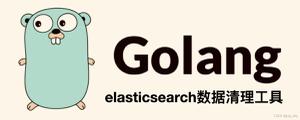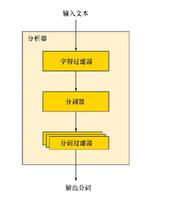如何使用Nest ElasticSearch在多个索引中进行搜索?
我有两个具有以下映射的索引(我将简化它们的映射):
1)AccountType映射:
elasticClient.CreateIndex("account", i => i .Settings(s => s
.NumberOfShards(2)
.NumberOfReplicas(0)
)
.Mappings(m => m
.Map<AccountType>(map => map
.AutoMap()
.Properties(p => p
.Text(c => c
.Name(n => n.Name)
.Analyzer("standard")
)
.Text(c => c
.Name(n => n.Description)
.Analyzer("standard")
)
)
)
)
);
2)ProductType映射:
elasticClient.CreateIndex("proudct", i => i .Settings(s => s
.NumberOfShards(2)
.NumberOfReplicas(0)
)
.Mappings(m => m
.Map<ProductType>(map => map
.AutoMap()
.Properties(p => p
.Text(c => c
.Name(n => n.Title)
.Analyzer("standard")
)
.Text(c => c
.Name(n => n.Description)
.Analyzer("standard")
)
)
)
)
);
现在,我有几件事需要弄清楚:
1)首先,有一个索引是一个好主意,在我的情况下是帐户,并且产品是嵌套对象,但是在这里每次我要更新/添加新产品时,我都必须重新索引(更新)整个帐户文件?
2)我的第二个问题是:我想具有搜索功能,因此,如果用户通过在文本框中键入内容进行搜索,则我希望同时获得“帐户”和“产品”的最佳匹配(此处,我将针对产品的名称和说明以及帐户名称和说明,然后获得最佳匹配):
因此,在这里如何使用
搜索多个索引,或者如果不可能从每个索引中获得最佳匹配,然后根据得分从两个结果中获得最佳匹配是一个好主意吗?
PS:这是一个搜索产品内部索引的示例:
var result = elasticClient.Search<ProductType>(s => s .Size(10)
.Query(q => q
.MultiMatch(m => m
.Fields(f => f.Field(p => p.Title, 1.5).Field(p => p.Description, 0.8))
.Operator(Operator.Or)
.Query(query)
)
)
);
回答:
1)首先,有一个索引是一个好主意,在我的情况下是帐户,并且产品是嵌套对象,但是在这里每次我要更新/添加新产品时,我都必须重新索引(更新)整个帐户文件?
通常建议每个索引具有一种类型,在Elasticsearch
6.0+中,每个索引只能具有一种类型。如果将产品表示为帐户上的嵌套对象,则向帐户中添加新产品将需要更新整个文档(
在您的应用程序代码中或在Elasticsearch中 )。
2)我的第二个问题是:我想具有搜索功能,因此,如果用户通过在文本框中键入内容进行搜索,则我希望同时获得“帐户”和“产品”的最佳匹配(此处,我将针对产品的名称和说明以及帐户名称和说明,然后获得最佳匹配):
您可以搜索多个索引,查看协变搜索结果的文档;它显示了从一个索引返回多种不同类型的示例(此示例将更新为6.0!),但是可以跨多个索引执行此操作。这是一个例子:
private static void Main(){
var settings = new ConnectionSettings(new Uri("http://localhost:9200"))
.InferMappingFor<AccountType>(i => i
.IndexName("account")
)
.InferMappingFor<ProductType>(i => i
.IndexName("product")
)
// useful for development, to make the request/response bytes
// available on the response
.DisableDirectStreaming()
// indented JSON in requests/responses
.PrettyJson()
// log out all requests/responses
.OnRequestCompleted(callDetails =>
{
if (callDetails.RequestBodyInBytes != null)
{
Console.WriteLine(
$"{callDetails.HttpMethod} {callDetails.Uri} \n" +
$"{Encoding.UTF8.GetString(callDetails.RequestBodyInBytes)}");
}
else
{
Console.WriteLine($"{callDetails.HttpMethod} {callDetails.Uri}");
}
Console.WriteLine();
if (callDetails.ResponseBodyInBytes != null)
{
Console.WriteLine($"Status: {callDetails.HttpStatusCode}\n" +
$"{Encoding.UTF8.GetString(callDetails.ResponseBodyInBytes)}\n" +
$"{new string('-', 30)}\n");
}
else
{
Console.WriteLine($"Status: {callDetails.HttpStatusCode}\n" +
$"{new string('-', 30)}\n");
}
});
var client = new ElasticClient(settings);
if (client.IndexExists("account").Exists)
client.DeleteIndex("account");
client.CreateIndex("account", i => i
.Settings(s => s
.NumberOfShards(2)
.NumberOfReplicas(0)
)
.Mappings(m => m
.Map<AccountType>(map => map
.AutoMap()
.Properties(p => p
.Text(c => c
.Name(n => n.Name)
.Analyzer("standard")
)
.Text(c => c
.Name(n => n.Description)
.Analyzer("standard")
)
)
)
)
);
if (client.IndexExists("product").Exists)
client.DeleteIndex("product");
client.CreateIndex("product", i => i
.Settings(s => s
.NumberOfShards(2)
.NumberOfReplicas(0)
)
.Mappings(m => m
.Map<ProductType>(map => map
.AutoMap()
.Properties(p => p
.Text(c => c
.Name(n => n.Title)
.Analyzer("standard")
)
.Text(c => c
.Name(n => n.Description)
.Analyzer("standard")
)
)
)
)
);
client.IndexMany(new[] {
new AccountType { Name = "Name 1", Description = "Description 1" },
new AccountType { Name = "Name 2", Description = "Description 2" },
new AccountType { Name = "Name 3", Description = "Description 3" },
new AccountType { Name = "Name 4", Description = "Description 4" },
});
client.IndexMany(new[] {
new ProductType { Title = "Title 1", Description = "Description 1" },
new ProductType { Title = "Title 2", Description = "Description 2" },
new ProductType { Title = "Title 3", Description = "Description 3" },
new ProductType { Title = "Title 4", Description = "Description 4" },
});
var indices = Indices.Index(typeof(ProductType)).And(typeof(AccountType));
client.Refresh(indices);
var searchResponse = client.Search<object>(s => s
.Index(indices)
.Type(Types.Type(typeof(ProductType), typeof(AccountType)))
.Query(q => (q
.MultiMatch(m => m
.Fields(f => f
.Field(Infer.Field<ProductType>(ff => ff.Title, 1.5))
.Field(Infer.Field<ProductType>(ff => ff.Description, 0.8))
)
.Operator(Operator.Or)
.Query("Title 1")
) && +q
.Term("_index", "product")) || (q
.MultiMatch(m => m
.Fields(f => f
.Field(Infer.Field<AccountType>(ff => ff.Name, 3))
.Field(Infer.Field<AccountType>(ff => ff.Description, 0.3))
)
.Operator(Operator.Or)
.Query("Name 4")
) && +q
.Term("_index", "account"))
)
);
foreach (var document in searchResponse.Documents)
Console.WriteLine($"document is a {document.GetType().Name}");
}
public class ProductType
{
public string Title { get; set; }
public string Description { get; set; }
}
public class AccountType
{
public string Name { get; set; }
public string Description { get; set; }
}
结果是
document is a AccountTypedocument is a ProductType
document is a AccountType
document is a ProductType
document is a AccountType
document is a AccountType
document is a ProductType
document is a ProductType
这里有很多事情,所以让我解释一下。搜索请求JSON如下所示:
POST http://localhost:9200/product%2Caccount/producttype%2Caccounttype/_search?pretty=true {
"query": {
"bool": {
"should": [
{
"bool": {
"must": [
{
"multi_match": {
"query": "Title 1",
"operator": "or",
"fields": [
"title^1.5",
"description^0.8"
]
}
}
],
"filter": [
{
"term": {
"_index": {
"value": "product"
}
}
}
]
}
},
{
"bool": {
"must": [
{
"multi_match": {
"query": "Name 4",
"operator": "or",
"fields": [
"name^3",
"description^0.3"
]
}
}
],
"filter": [
{
"term": {
"_index": {
"value": "account"
}
}
}
]
}
}
]
}
}
}
该搜索是在product和account索引之间,在producttype和accounttype类型之间执行的。在title和description字段上执行multi_match查询,并将其与使用布尔查询的术语查询结合,以将查询约束到product索引。术语查询位于过滤器子句中,因为不应为该术语查询计算相关性得分。此布尔查询与另一个布尔查询结合在一起,该布尔查询对name和description字段执行multi_match查询,并与术语查询组合以将查询约束到account索引。这两个布尔查询使用should子句合并,因为其中一个布尔查询或另一个布尔布尔查询需要匹配。
object作为通用的参数类型的Search<T>()方法调用,因为ProductType和AccountType不共享一个公共基类(除了object!),其产生的文档集合可以分型。但是,从结果中我们可以看到,NEST实际上已反序列化了类型producttype为的实例的ProductType文档和类型accounttype为的实例的文档AccountType。
该查询使用运算符重载来更简洁地组合查询。
以上是 如何使用Nest ElasticSearch在多个索引中进行搜索? 的全部内容, 来源链接: utcz.com/qa/421044.html





